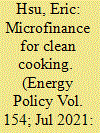| Srl | Item |
| 1 |
ID:
095315


|
|
|
|
|
| Publication |
2010.
|
| Summary/Abstract |
China's leading state-owned banks have undergone radical transformation in recent years, with six of the country's top seven players listed in both Hong Kong and Shanghai. We first consider how the banks were reorganized for initial public offering, in terms of the removal of non-performing loans and the massive recapitalization of their balance sheets. Second, and more importantly, we consider whether they have been able to retain market share, further commercialize and enhance overall financial positions post-listing. Through in-depth case analysis of the six state-owned banks, we show that post-initial public offering they have significantly improved profitability, loan book size, loan book quality and capital reserve protection. However, we caution that the debilitating effects of the global credit crunch may slow or even arrest further progress across these dimensions in the near term. We conclude that China's leading banks have benefited materially from their transition, and have accordingly developed a range of competitive and co-operative strategies not only to sustain domestic market advantage but also to penetrate overseas markets.
|
|
|
|
|
|
|
|
|
|
|
|
|
|
|
|
| 2 |
ID:
180094


|
|
|
|
|
| Summary/Abstract |
Liquidity constraints are a key barrier to acquisition and sustained use of clean household energy in resource-poor settings. This study evaluates a pilot microfinance initiative in Kenya to help low-income rural households access liquefied petroleum gas (LPG) for cooking. Program beneficiaries received a six-month loan that covered all equipment costs and was to be repaid in monthly installments. We present results from surveys of beneficiaries (n = 69) after they began using LPG, as well as 332 non-beneficiaries from the same community (to understand how beneficiaries and non-beneficiaries differ in cooking patterns and socioeconomic outcomes). 94% of beneficiaries had repaid their loan in full and on time at the time of data collection. Meanwhile, beneficiaries were more likely than non-beneficiaries to use LPG as their primary cooking fuel (76.8% of beneficiaries versus 38.8% of non-beneficiaries). While 81.1% of beneficiaries who used LPG as their primary cooking fuel reported multiple fuel use, we find beneficiaries increased LPG use by 5.9 h per week with a corresponding decrease of 4.8 h in weekly use of biomass fuel. Our findings suggest that promoting LPG usage through microloans for equipment is likely to be both commercially viable and beneficial to health through decreased use of polluting biomass fuel.
|
|
|
|
|
|
|
|
|
|
|
|
|
|
|
|
| 3 |
ID:
149843


|
|
|
|
|
| Summary/Abstract |
Small island developing states (SIDS) have some of the highest electricity tariffs globally. Renewable energy (RE) technologies could thus have reached grid parity in various SIDS. Furthermore, the abundance of resources such as solar and wind provides ample potential for SIDS to switch from high cost diesel generators to renewables. Despite favourable conditions, RE remains a largely underinvested sector in these regions. This paper aims to undercover the reasons why grid parity does not necessary translate into private sector investments in RE. With a focus on SIDS, this paper presents an evidence that achieving grid parity based on LCOE estimates is an incomplete benchmark for decision making in the power generation industry. In particular, LCOE and grid parity do not take into account financing constraints of RE projects which are often more pronounced compared to conventional forms of power generation. This paper thus presents the business perspective of RE projects, by employing a discounted cashflow model that includes various profitability metrics and effects of taxation and depreciation. The study shows that financing conditions exert strong influence on the economic feasibility of solar projects, both in LCOE terms and profitability terms. Thus, key policies should be targeted at improving financing conditions to ensure mobilization of private sector finances in solar PV.
|
|
|
|
|
|
|
|
|
|
|
|
|
|
|
|